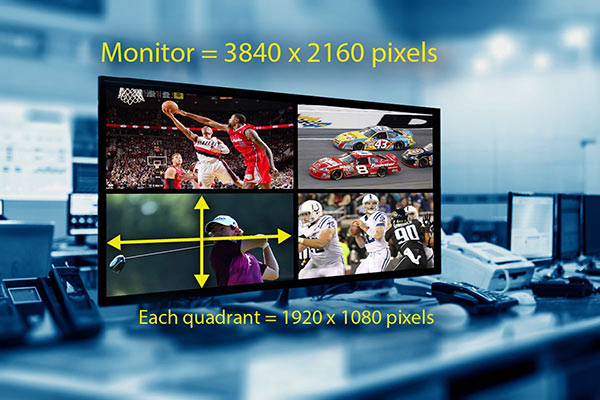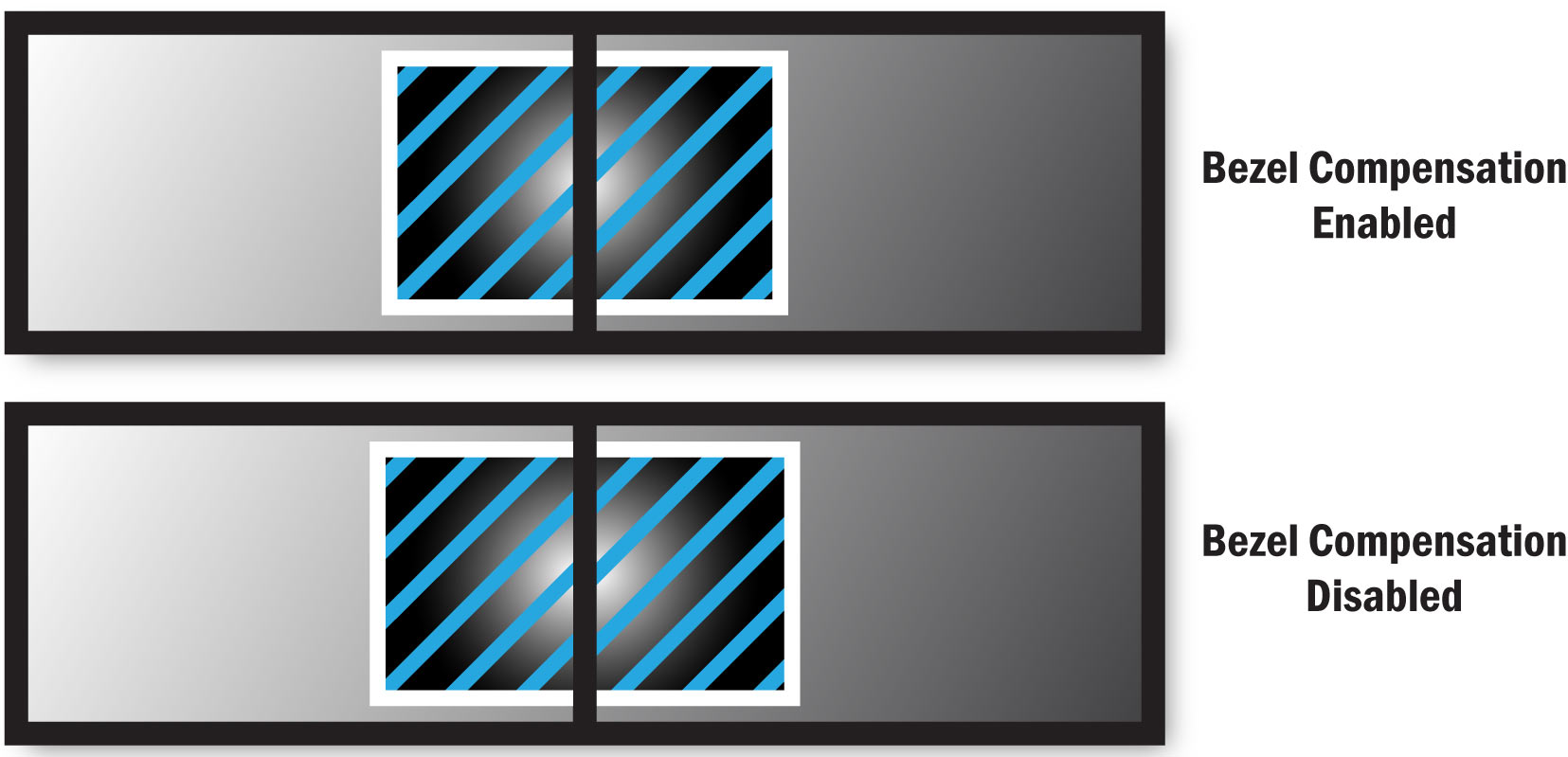Multi-Monitor Video Walls and Bezel Compensation
When constructing a multi-monitor video wall, another key customer consideration is the total amount of continuous display space between monitor bezels. These bezels (also known as mullions) provide a rigid support structure for the LCD panels in each display. However, on a video wall, bezels also break up the continuous appearance of images that may be scaled across multiple monitors.

As standard, all RGB Spectrum wall processors provide the ability to compensate for the width of the display bezels. With compensation enabled, an image that is scaled across multiple monitors will appear perfectly normal, as if it is located “behind” the bezels. This type of compensation would be ideal for a digital signage application, or a large wall display designed to be “eye candy.” On the other hand, for a critical security application, the customer may elect to disable compensation, so that every pixel is viewable and no pixels are hidden behind the bezels.
In the following diagram, two monitors with very large bezels are used for illustration purposes only. In the top array, bezel compensation is enabled, and the diagonal stripes appear perfectly continuous, as if they are behind the bezels. In the bottom array, bezel compensation is turned off, no pixels are hidden, and thus the diagonal strips do not appear continuous.
Monitor Array with and without bezel compensation
Note that with a 4K UHD video wall, larger format display devices can also be used, thus reducing the total number of bezels on the wall. If continuous imagery is important to one’s application, then 4K UHD resolution monitors offer this added benefit.
